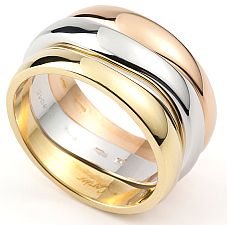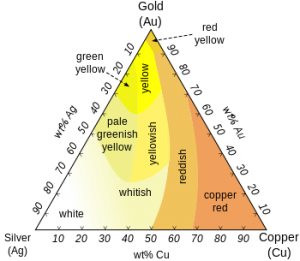What are the different types of gold in jewelry?
When you are buying gold jewelry, you often get to choose between different types of gold colors, gold karats, and gold plating options. What do all those things mean, and is there a big difference between the different gold types? Here’s a quick guide to learn about gold colors, karats, and coatings.


 Yellow gold is made by mixing pure gold with silver, copper, and zinc. It is the purest color, the most hypo-allergenic, and requires the least maintenance of all the gold colors.
Yellow gold is made by mixing pure gold with silver, copper, and zinc. It is the purest color, the most hypo-allergenic, and requires the least maintenance of all the gold colors. White gold is made of gold and platinum (or palladium). White gold can also be made of gold, palladium, nickel and zinc. White gold is more durable and scratch-resistant than yellow gold. It is also more affordable than both yellow gold and platinum.
White gold is made of gold and platinum (or palladium). White gold can also be made of gold, palladium, nickel and zinc. White gold is more durable and scratch-resistant than yellow gold. It is also more affordable than both yellow gold and platinum. Rose gold (or pink gold) is alloyed with gold, copper, and silver. Rose gold is more affordable than the other gold colors because it uses the inexpensive copper for its rose color. Due to its copper content, rose gold is more durable than yellow or white gold.
Rose gold (or pink gold) is alloyed with gold, copper, and silver. Rose gold is more affordable than the other gold colors because it uses the inexpensive copper for its rose color. Due to its copper content, rose gold is more durable than yellow or white gold. Green gold (or Electrum) is mixed with gold, silver, and sometimes copper. Silver is what gives the gold alloy the green nuance.
Green gold (or Electrum) is mixed with gold, silver, and sometimes copper. Silver is what gives the gold alloy the green nuance.